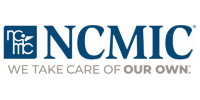(Arlington, Va.) -- The American Chiropractic Association (ACA) and the Association of Chiropractic Colleges (ACC) today expressed support for newly introduced legislation in the U.S. House of Representatives designed to expand the availability of the services delivered by chiropractic physicians in the federal Department of Veterans Affairs (VA) and to those who utilize the military’s health care delivery system, TRICARE, run by the Department of Defense (DoD).
Ranking member of the House Veterans Affairs Committee, Rep. Bob Filner (D-Calif.), has again introduced the Chiropractic Care to All Veterans Act (H.R. 329), a bill similar to legislation that was overwhelmingly passed by the entire House in 2010 but was not considered in the Senate. H.R. 329 would require the VA to have a chiropractic physician on staff at all major VA medical facilities by 2014. It would also amend the current statute, the Department of Veterans Affairs Health Care Programs Enhancement Act of 2001, ensuring that chiropractic benefits are included in the U.S. Code of Federal Regulations and therefore, cannot be denied.
“Our nation’s veterans and active-duty military, along with their family members, have sacrificed so much for our country. They deserve the best health care available, and that includes chiropractic care,” said ACA President Rick McMichael, DC. “It makes me proud to see the chiropractic profession working with our congressional allies in support of this important legislation.”
Through previous congressional action, chiropractic care is now available at 36 VA facilities across the country; however, in the more than 100 major VA medical facilities without a chiropractic physician on staff, the chiropractic care benefit Congress authorized for America’s veterans remains virtually nonexistent. Detroit, Denver, and Chicago are a few of the major metropolitan areas still without a chiropractic physician at the local VA medical facility.
The ACA and ACC believe that integrating chiropractic care into the VA health care system would not only be cost-effective, it would also speed the recovery of many of the veterans returning from current operations overseas. A 2010 report from the Veterans Health Administration indicates that over half of all veterans returning from the Middle East and Southwest Asia who have sought VA health care were treated for symptoms associated with musculoskeletal ailments – the top complaint of those tracked for the report.
In addition, Rep. Mike Rogers (R-Ala.) has re-introduced another piece of legislation in the House that would extend chiropractic care to U.S. military retirees, dependents and survivors as part of the TRICARE program. H.R. 409, the Chiropractic Health Parity for Military Beneficiaries Act, would require the Secretary of Defense to develop a plan to allow any beneficiary covered under TRICARE to select and have direct access to a chiropractic physician. The plan deadline is Aug. 31, 2011. Currently, only active duty members are afforded the chiropractic benefit.
“I am pleased that Congress has taken these two important steps that, when taken together, facilitate access by our veterans, active military and their families to fundamental health care benefits such as chiropractic care,” said ACC President Dr. Frank Nicchi, “Chiropractic continues to enjoy high levels of satisfaction among our servicemen and women.”
H.R. 409 defines “chiropractic services” as diagnosis (including X-ray and tests), evaluation and management, and therapeutic services for the treatment of neuromusculoskeletal health conditions. The legislation specifically notes that chiropractic services may only be provided by a chiropractic physician. Rep. Rogers introduced nearly identical legislation in the past two sessions of Congress.
To view the full text of H.R. 329, click here.
To see the full text of H.R. 409, click here.
ACA and ACC request that chiropractic physicians contacttheir congressional representatives and urge them to cosponsor both of these bills.
The American Chiropractic Association (ACA), based in Arlington, Va., is the largest professional association in the United States representing doctors of chiropractic. ACA promotes the highest standards of patient care and ethics, and supports research that contributes to the health and well-being of millions of chiropractic patients. Visit www.acatoday.org.




